Transforming your backyard into a lush, productive garden can feel like a daunting task, especially when you’re unsure where to start. Raised bed gardens offer an excellent solution, providing not only aesthetic appeal but also practical benefits such as improved soil quality and easier maintenance.
Whether you’re looking to grow vibrant flowers or delicious vegetables, our guide on raised bed garden ideas will help you create the perfect green space with minimal fuss.
Imagine stepping into your garden and being greeted by thriving plants in beautifully crafted raised beds. From simple wood structures to innovative cinder block designs, there are countless ways to build an efficient and attractive garden that suits your needs.
Dive into our curated selection of DIY projects and expert tips to turn your gardening dreams into reality.
Planning Your Raised Bed Garden
Choosing the Right Location
Pick a spot that gets at least eight hours of sunlight daily. Aim for south- or west-facing areas to maximise light. Avoid places with waterlogging or frost pockets, and watch out for shadows from trees and structures.
Selecting the Best Size for Your Needs
Keep beds no wider than 4ft (1.2m) so you can reach everything without stepping on the soil. While lengths can vary, smaller beds around 15ft (4.5m) are easier to handle and allow multiple crops. Depths should be at least 30cm (1ft) for shallow-rooted plants like salad leaves, and 45cm (18in) or more for most other plants.
Determining the Ideal Shape

Avoid long beds as they can be hard to manage; opt for several smaller ones instead. Rectangular or square shapes work well, with square foot gardening being a popular method for intensive planting.
Materials and Tools for Building Raised Beds
Creating raised bed gardens involves selecting the right materials and tools. Different options can suit various needs, preferences, and budgets.
Natural Materials: Wood, Stone, and Bricks
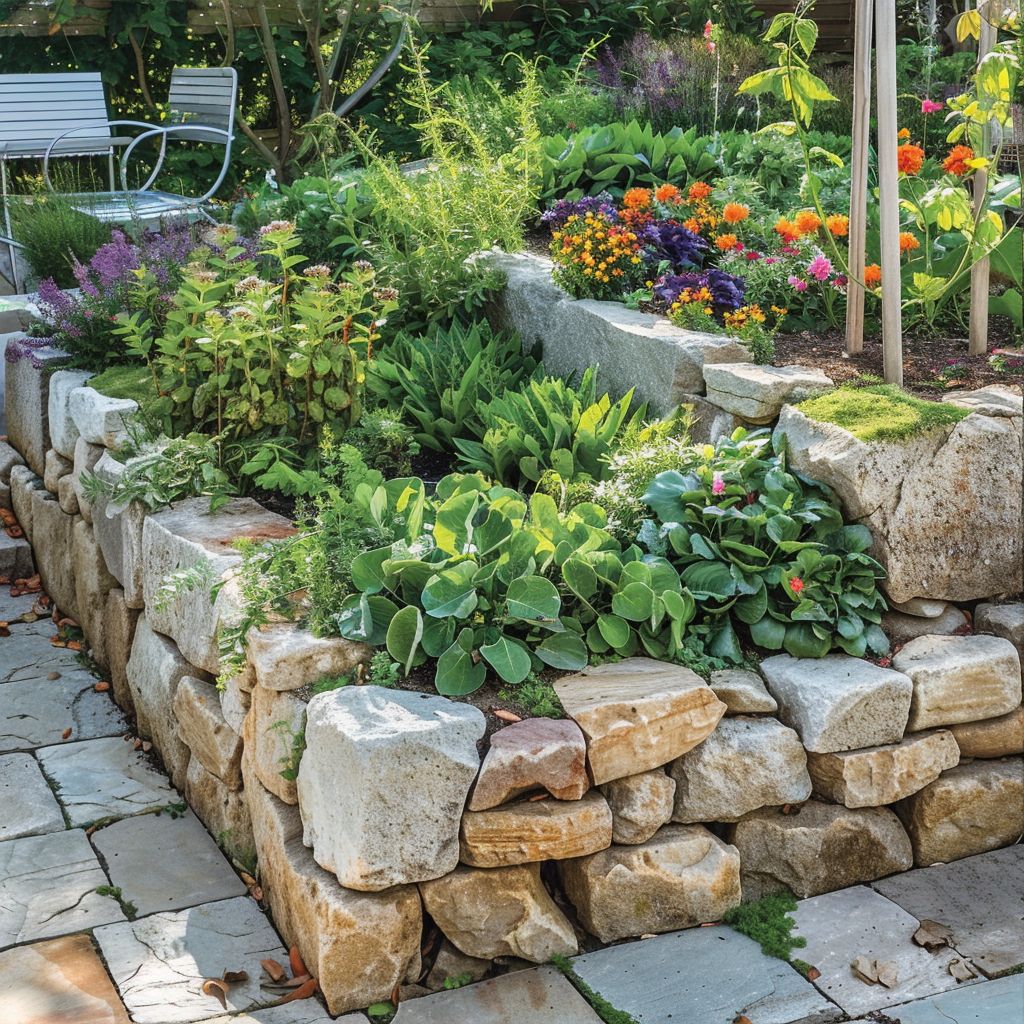
Wood: Cedar is a top choice for its rot-resistance. Other great options include softwood sleepers and reclaimed hardwood. Avoid pressure-treated wood as it may leach chemicals into your soil.
Stone: You can use either natural or prepared stone for constructing walls as part of your stone garden plans. It looks attractive but requires skilled labor and proper footings.
Bricks: Durable bricks are perfect for making curved beds. Engineering bricks work well outdoors; however, domestic ones may well not last as long.
Upcycled and Recycled Materials
Wooden Pallets: Repurpose these to create vertical gardens or stack them to form raised beds. They’re cost-effective and environmentally friendly.
Old Furniture: Transform tables or bookcases into raised beds. This approach adds character to your garden while being sustainable.
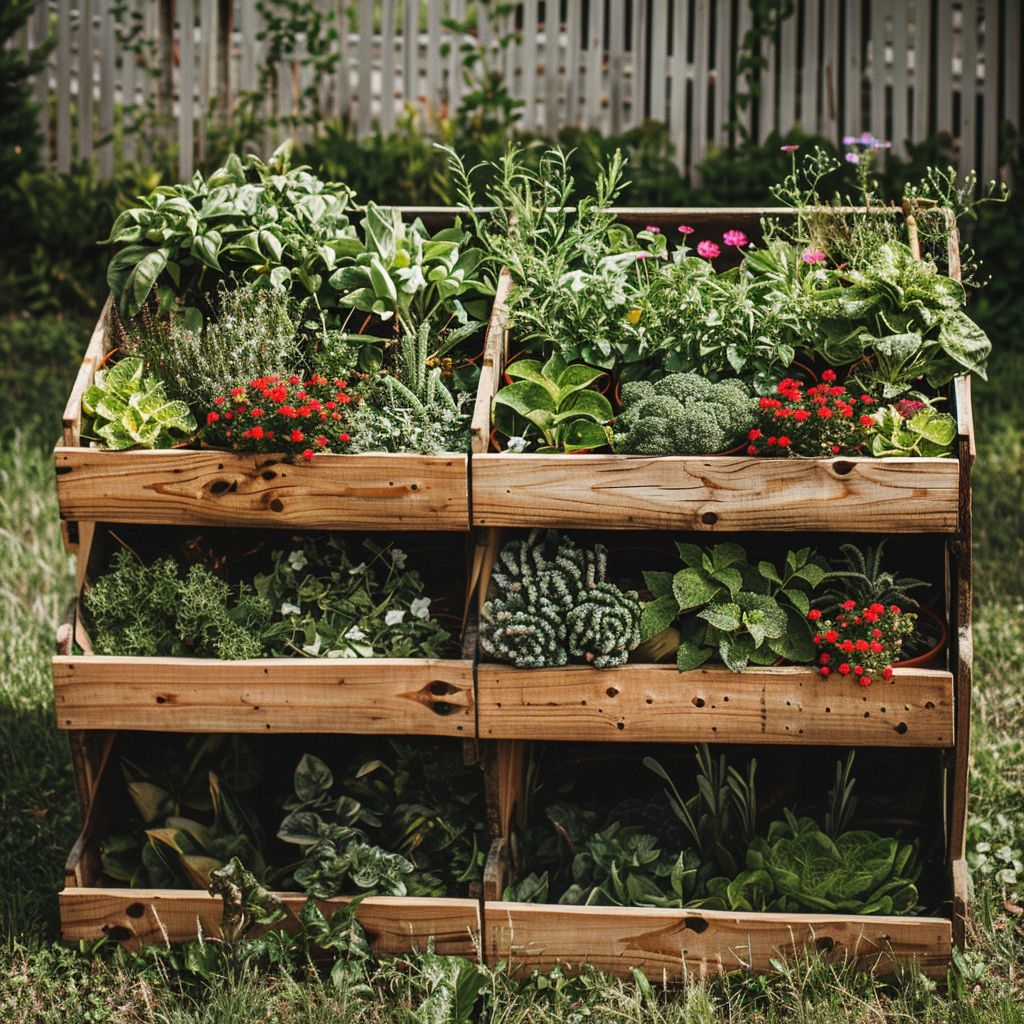
Necessary Tools for Assembly
You’ll need basic tools like a shovel, hammer, saw, screws, nails, level, measuring tape, gloves, drill with bits if you’re working with wood or pallets. For stone or brick constructions, a trowel and mortar will be essential too. Having all these on hand will make the building process smoother.
Design Ideas for Raised Bed Gardens
Exploring various raised bed garden designs can transform your gardening experience, making it both enjoyable and productive.
Classic Rectangular Raised Beds
- Simple and Versatile: Rectangular raised beds are popular because of their straightforward design. They fit different garden sizes easily and you can build them using wood, bricks, or stones.
- Easy Access: These beds allow you to reach plants without hassle. This makes tasks like weeding and harvesting much simpler.
Innovative Circular and Triangular Beds
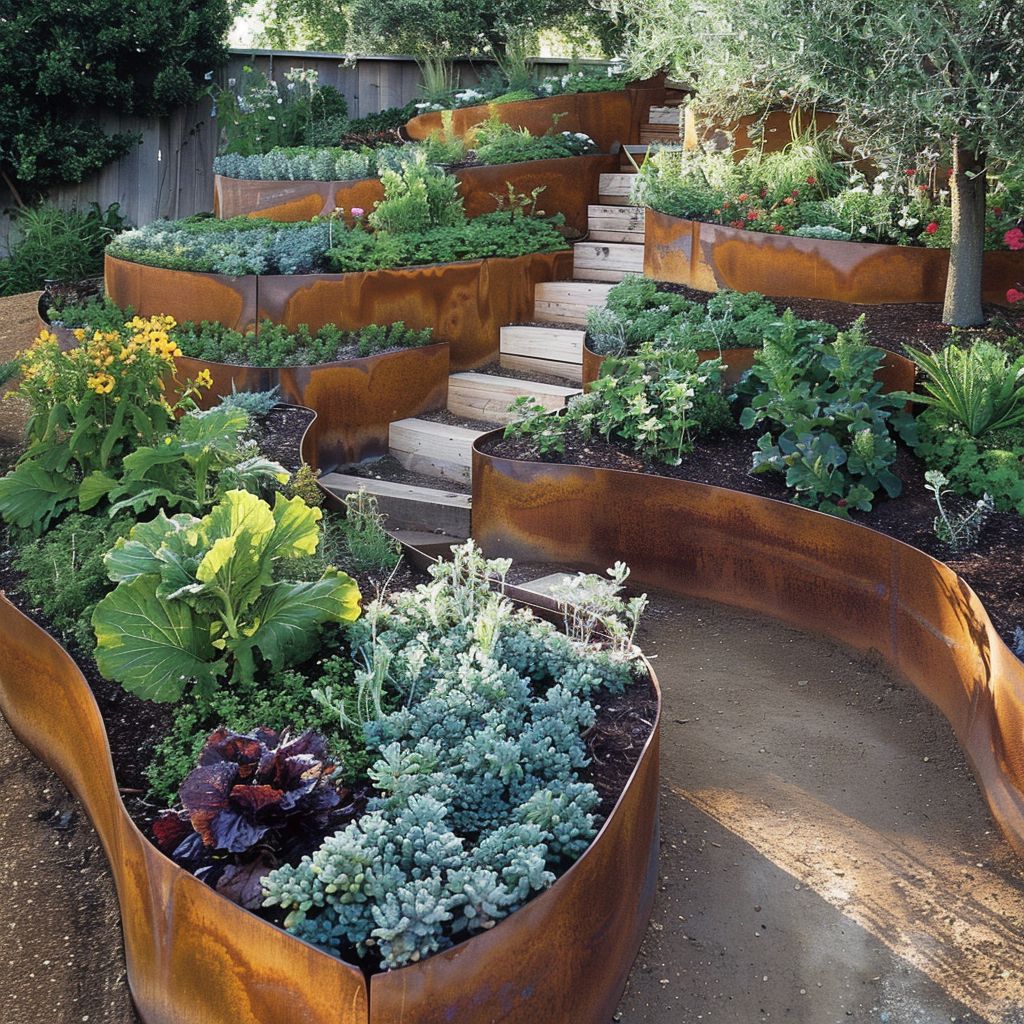
- Distinct Shapes: Circular and triangular raised beds add a fresh look to your garden. You can use materials like wood, bricks, or stones to construct them.
- Space Efficiency: Triangular beds work well in corners or tight spaces. They help maximise the planting area available to you.
- Enhanced Aesthetics: Multi-level beds create visual depth in your garden. They let you grow a variety of plants at different heights, adding charm.
- Optimised Growing Conditions: Different levels can provide varied sunlight exposure. This supports diverse plant needs within one structure.
These ideas offer practical solutions while enhancing your garden’s appearance.
Planting Strategies for Raised Beds
Raised bed gardens offer numerous planting strategies that can maximise your space and yield.
Companion Planting Basics
Pair plants that benefit each other. For example, plant marigolds with cucumbers to attract beneficial insects and repel pests. Combine peas and cucumbers; they provide mutual support and reduce pests.
Seasonal Planting Guides
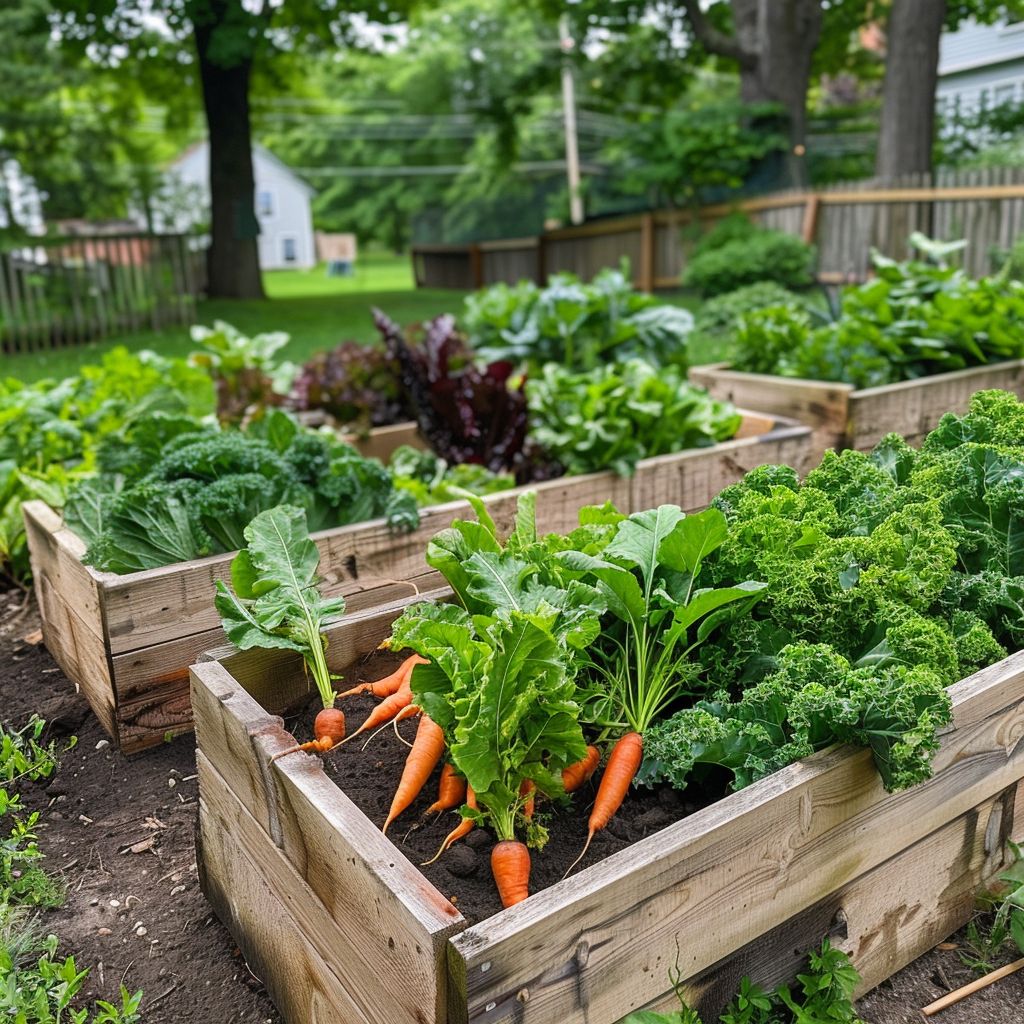
Plan your garden according to the seasons. In spring, plant cool-season veggies like lettuce and spinach. Summer’s ideal for tomatoes, peppers, and beans. Autumn suits crops such as carrots, beets, and kale.
Plant Choices for Year-Round Harvest
Select plants wisely to enjoy a year-round harvest. Grow leafy greens like chard in winter—they’re frost-tolerant. Opt for perennials such as asparagus for continuous yield over years. Rotate fast-growing crops like radishes throughout the year for constant fresh produce.
Soil and Composting Techniques
Preparing the Ideal Soil Mix
Creating nutrient-rich soil is essential for your raised bed garden. Start by using premium-grade topsoil, which should make up around 50% of the mix. Combine three parts organic matter like compost, leaf mould, or well-rotted manure with two parts sharp sand and seven parts topsoil.
Adding 20% organic matter boosts soil structure and water retention. This mixture provides a strong foundation for healthy plant growth.
Setting Up a Composting System Nearby
Having a composting system close to your garden simplifies waste management and enriches your soil. Use green clippings, veggie scraps, and other biodegradable materials to create sterile compost.
Sterilized compost should constitute about two-thirds of the soil in your raised beds. This will supply essential nutrients and improve plant health over time.
Irrigation Solutions for Raised Beds
Effective watering is crucial for maintaining healthy plants in raised garden beds. Here are some top irrigation solutions to consider.
Drip Irrigation Systems
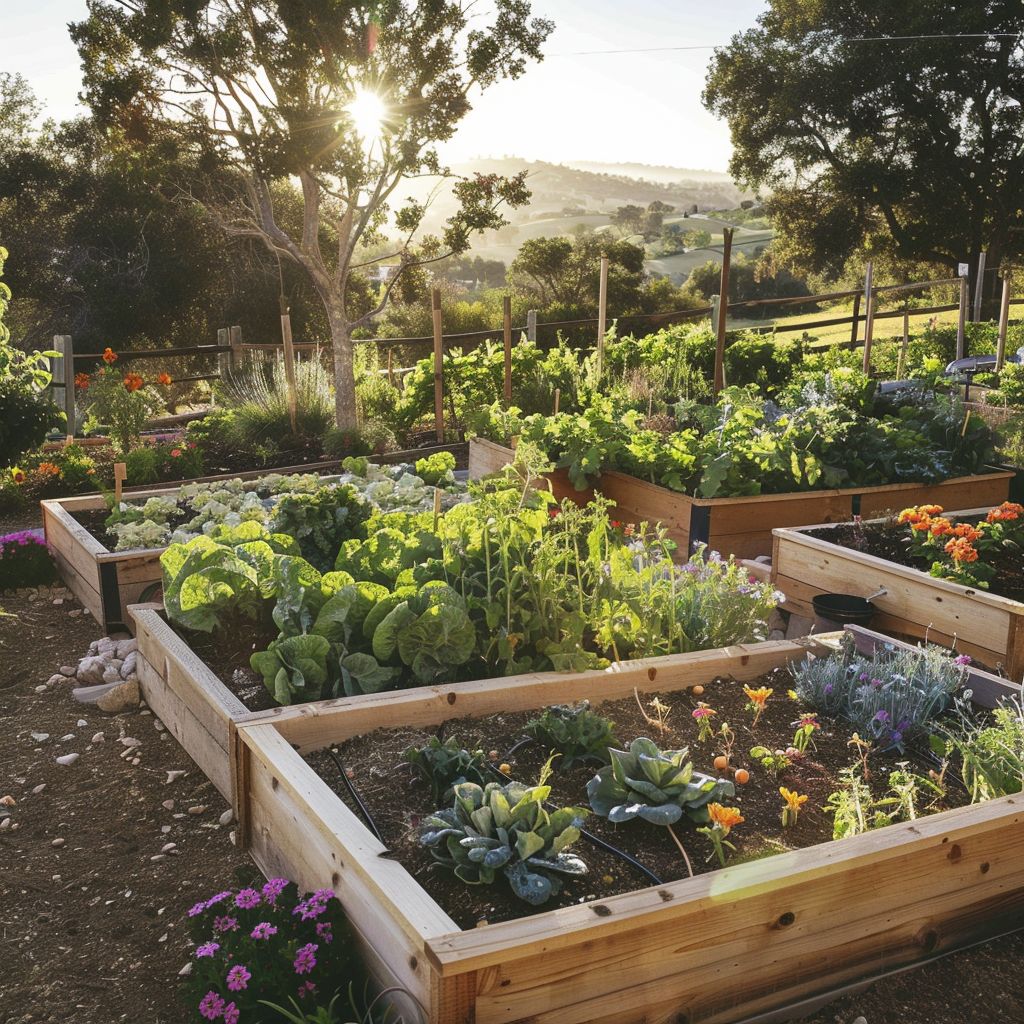
Drip irrigation systems are highly efficient. They deliver water directly to the plant roots, minimising evaporation and waste. These systems include pipes, connectors, and emitters that can be tailored to fit any bed size or plant type. You’ll save both time and water while ensuring your plants get what they need.
Drip irrigation also helps prevent fungal infections by keeping foliage dry. This method can be automated with timers, making it perfect if you don’t have time to water daily. Installing a drip system may well require an initial investment but pays off in the long run.
Traditional Watering Methods
Traditional watering methods like hand watering or using a hose work well too. Hand watering gives you complete control over how much each plant receives and allows you to check on their health regularly.
However, these methods can be time-consuming and less consistent compared to automated systems. It’s best to water early in the morning or late in the evening when temperatures are cooler, reducing evaporation rates significantly.
For smaller gardens, soaker hoses can be a good alternative. They release water slowly along their length, providing even moisture distribution across your garden bed without much effort on your part.
By choosing the right irrigation solution for your raised beds, you’ll keep your garden thriving throughout the growing season.
Pest Control and Protection
Protecting your raised bed garden from pests is crucial for a healthy harvest. Here are effective strategies to keep those pesky intruders at bay.
Monitoring and Physical Removal
Regularly inspect your raised beds. Spotting issues early helps nip them in the bud. Remove any pests, eggs, or diseased plants immediately to stop them spreading.
Proper Mulching
Use mulch like cedar and cypress bark. These contain natural oils that deter many pests. Avoid wood mulch which can attract unwanted bugs.
Predatory Insects
Attract beneficial insects such as lady beetles, lacewings, and parasitic wasps. Plant flowers and herbs they love to bring them into your garden.
Proper Watering
Avoid overwatering your plants. Excessive moisture invites pests. Use well-draining soil and water regularly but not excessively to maintain plant health.
Natural Pest Deterrents
Copper tape around pots or beds can help deter slugs. They find it hard to cross copper surfaces, keeping your plants safe from their nibbling habits.
Plant marigolds among veggies like tomatoes and peppers. Marigolds repel nematodes and other harmful insects naturally while adding beauty to your garden.
DIY Solutions for Keeping Beds Safe
Consider homemade sprays using ingredients like garlic, chilli pepper, or neem oil. These can effectively repel various pests without harming plants.
Install physical barriers such as row covers or netting over your beds to protect against larger critters like birds or rabbits seeking a snack in your garden.
Accessorising Your Raised Beds
Adding accessories to your raised beds can significantly boost both functionality and visual appeal. Here are some ideas to get you started:
Adding Benches and Seating
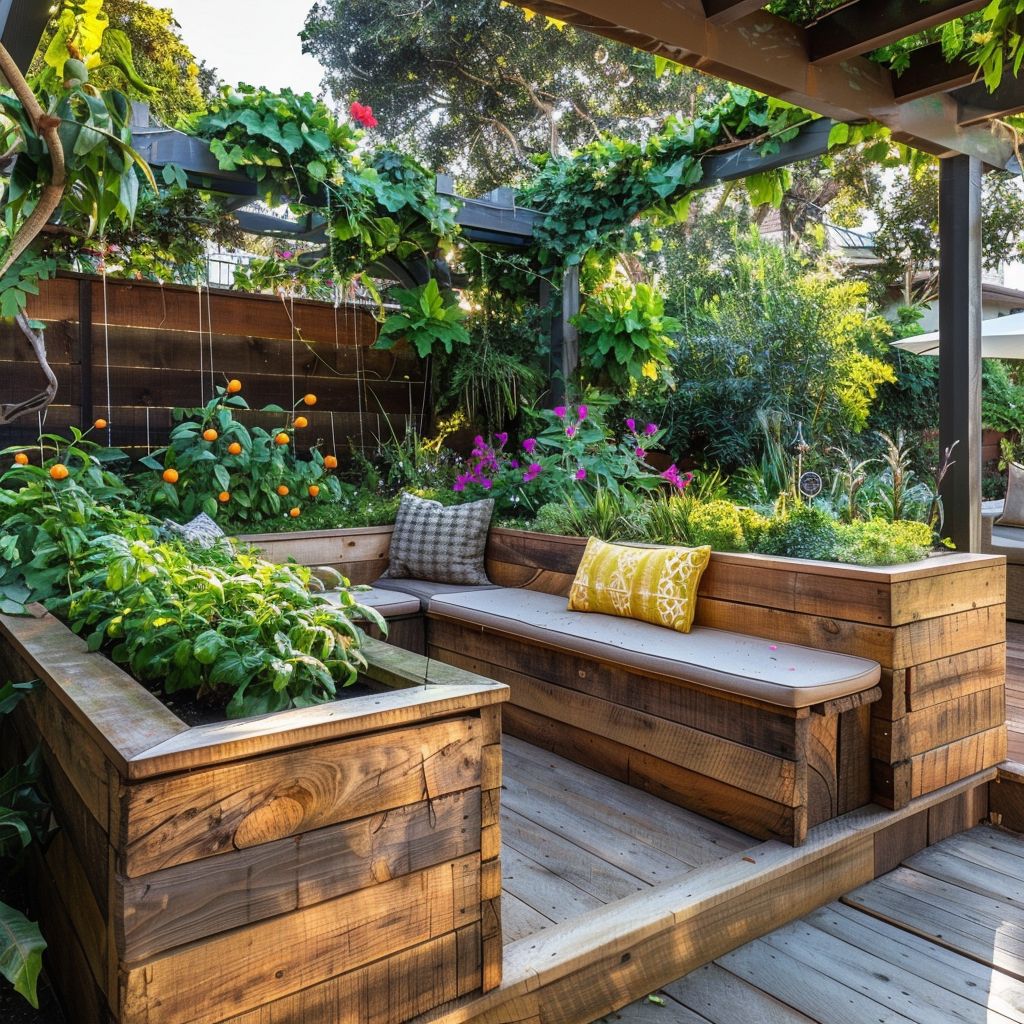
Integrate benches into your raised bed design for a practical seating option. Use durable materials like stone or treated wood to complement the garden’s aesthetics. Place benches strategically around the garden, creating inviting spots to relax or work on plants.
Installing Trellises and Support Structures
Install trellises for climbing plants like tomatoes and cucumbers. Use materials such as metal or wood that blend well with your garden’s style. Create support structures using bamboo stakes or wire mesh for plants needing extra stability, enhancing growth while maintaining an organised space.
Materials
Choose from a variety of materials for constructing raised beds, including wood, bricks, stones, mulch, and straw. Each material offers different aesthetic and functional benefits. For example, stones provide durability while wood gives a classic look.
Drainage
Improve drainage by lining the bottom of the bed with large stones or plastic bottles. This prevents waterlogging and protects plant roots from burrowing animals. Good drainage is essential for healthy plant growth.
Customisation
Customise your raised beds to fit any space by varying levels, shapes, and sizes. Tailor them to suit various plants’ needs while creating eye-catching designs that enhance your garden’s overall look.
Inspirational Raised Bed Projects
Explore inventive ideas to transform your garden space into a thriving haven. Here are some creative projects that will inspire you.
Urban Spaces and Small Gardens
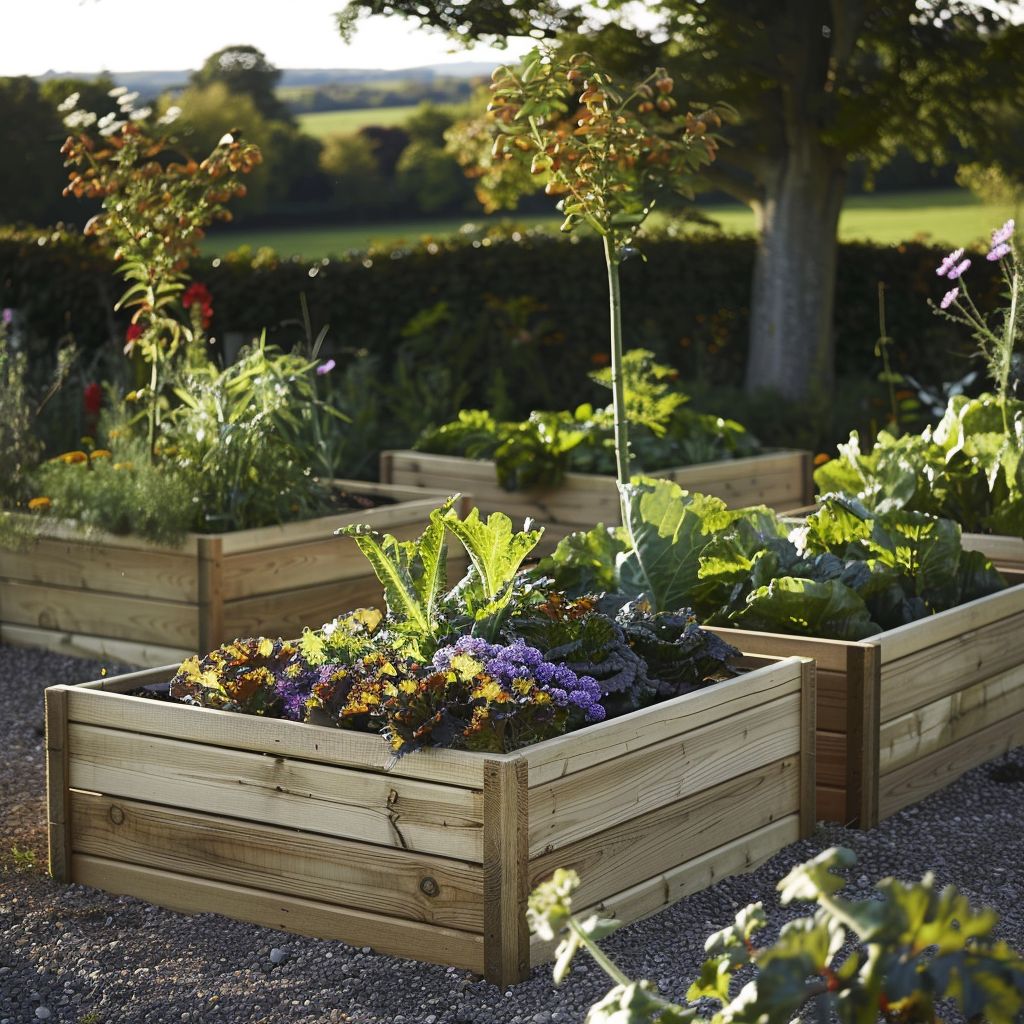
- Optimise Limited Space: Use raised beds to maximise your small backyard area. This efficient use of space allows for more planting in confined areas.
- Split Level Designs: Create tiered raised beds for a striking visual effect and better sunlight use. Perfect for small gardens needing flair.
- Timber Planters: Build sturdy, attractive timber raised beds quickly. These are ideal for urban settings wanting a natural touch.
- Modular Systems: Customise modular raised bed systems to fit tiny spaces perfectly. Adjust them easily to match changing needs.
- Complete Backyard Renovations: Integrate raised beds into your backyard beautification tips seamlessly, adding features like pavers and irrigation systems.
- Stone Steps Integration: Mix stone steps with tiered garden beds for dramatic landscape designs that stand out.
- Rustic Stone Beds: Swap traditional wood or metal beds with durable stone ones for a rustic yet elegant look.
- Multi-Functional Layouts: Combine garden beds with potting benches, trellises, or seating areas to create dynamic yard layouts.
Up next:
